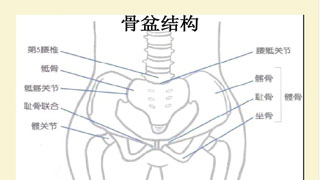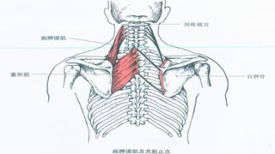
Is the protruding lower abdomen stubborn and difficult to eliminate, and the lower leg has been swollen for years without subsiding? be vigilant! Pelvic tilt not only affects the spine and neck, but also leads to poor blood and lymphatic circulation, decreased metabolic capacity, and can easily lead to obesity... How to prevent physical deterioration, the four major movements of pelvic correction.
The human body structure is interconnected, like building blocks stacked layer by layer. If the foundation is unstable, the overall balance will be unbalanced.
The pelvis, as a key part connecting the trunk and lower limbs, once tilting occurs, the body will activate a compensatory mechanism, relying on other parts (such as the waist and back) to maintain balance, which can lead to soreness over time.
Self check whether the pelvis needs correction
How to determine if one's pelvis is upright?
Anterior pelvic tilt
Characteristic: When the pelvis tilts forward, the waist usually protrudes forward and the buttocks are raised backward (pseudo hip arch), forming a clear curvature.
Symptom: Increased pressure on the lower back, causing pain.
Pelvic retroversion
Features: When the pelvis tilts backwards, the waist is concave inward and the buttocks are slightly sunken, making the buttocks appear flatter. Symptom: Muscle tension in the buttocks, causing discomfort in the buttocks or hips.
In addition to visual inspection, there is a more technological way - using "AI body measurement instruments" to easily identify the parts of the body that require special attention, and customize exclusive exercise menus based on personal test results.
Pelvic Correction 4 Actions
If there is pelvic tilt, practicing the following 4 movements carefully can help correct it.
Twist triangle action:
(1) Start standing posture, take a big step forward and backward with both feet, lean forward, and lightly touch the ground with both palms down, located directly below the shoulders.
(2) Inhalation preparation, slowly raise your right hand to the sky while exhaling, turn your chest to the right, and look at the fingertips of your right hand. During the process, maintain natural breathing, pause for a moment, take about 3 deep breaths, return to the starting movement, and repeat on the other side.
Tip: If your hands cannot touch the ground directly, you can place yoga tiles under your palms.
Archery step lateral rotation action:
(1) Start the archery step, with your right foot in front and your left foot behind, then support yourself with your left hand on the ground and your right hand on your hips to maintain stability.
(2) Keep your right foot still, pass your left foot through the back of your right foot and straighten it out, with your toes facing forward and your line of sight facing forward. Maintain natural breathing during the process, pause briefly, return to the starting movement, and repeat on the other side.
Tip: Be careful not to turn your knees outward or inward, align them with your toes, and avoid excessive arching.
Iliopsoas extension
Action:
(1) Start with hands on hips, taking bow and arrow steps, kneel on your right knee, step firmly on the ground with your left foot, and point your fingertips straight ahead. (2) After stabilizing the body, move the center of gravity forward, feel the extension of the right iliopsoas muscle, pause briefly, return to the starting position, and repeat the movement.
Tip: Be careful not to stretch or pinch your knees, align your toes, and do not over arch your back.
Lower back extension
Action:
(1) The initial diamond sitting posture is to bend your knees and place your hips on your heels, slightly open your knees, and place your hands lightly on the ground on both sides of your knees to maintain stability.
(2) Inhalation preparation, when exhaling, slowly stretch your hands forward, try to make your forehead touch the ground as much as possible, stay for a moment, return to the starting position, repeat the movement, sit firmly on your hips and maintain natural breathing during the process.
Pelvic tilt poses many hazards, quick correction is necessary
The pelvis is closely related to the whole body, and it can be said that one pull can move the whole body. If not properly corrected, it is easy to light up a health red light!
Unfavorable leg shape: The pelvis affects the entire body, and vice versa, various parts of the body can also affect the pelvis. Wearing beautiful but non functional shoes for a long time can cause tightness and pain in the soles of the feet, affecting walking posture and subsequently affecting knee joints, pelvis, etc., increasing the risk of O-shaped and X-shaped legs; Or if flat feet cannot effectively cushion the force between the body and the ground, they can easily affect the ankle joints, knee joints, etc., ultimately leading to pelvic tilt.
Yi Jing Pain: When women ovulate, the muscles around the pelvis will contract. If the pelvis is tilted, the muscles and ligaments on both sides become tense, and the pain intensifies during contraction. In addition, there are parasympathetic nerves distributed in the pelvic cavity that make people relax. Once disturbed, the body is difficult to relax and the pain is doubled.
Lower back pain: When the pelvis is tilted, the body will increase the pressure on the spine to maintain balance, causing tension in the muscles of the back and waist. If muscles cannot contract and relax normally, it is easy to pull bones to improper positions, resulting in decreased joint mobility, nerve stimulation, and natural lower back pain.
Protruding lower abdomen: With moderate weight and slender limbs, why is the lower abdomen still bulging? It is likely due to pelvic misalignment. When the pelvic position is correct, it can wrap the internal organs well, but when the pelvis is tilted or expanded, it is like a plate holding objects disappearing, causing the internal organs to sag and causing the lower abdomen to protrude.
Easy to constipation and frequent urination: The pelvis wraps around the digestive, reproductive, and urinary organs. If the pelvis tilts forward, backward, or twists, squeezing these organs can easily lead to bloating, indigestion, constipation, frequent urination, and urinary leakage.
Autonomic nervous system dysfunction: The pelvic area is covered with parasympathetic nerves, whose main function is to regulate relaxation, stabilize heart rate and blood pressure. Pelvic tilt can inhibit the parasympathetic nervous system, highlighting the dominant excitatory sympathetic nervous system, which can easily cause symptoms such as tension, anxiety, insomnia, and adrenaline surge.
Not easy to conceive: The ligaments connecting the uterus and the pelvic floor muscles connecting the coccyx intertwine with each other. Pelvic tilt can cause the uterus to be pulled or twisted, increasing the difficulty of sperm implantation. Even if one is fortunate enough to become pregnant, if the pelvic tilt does not improve, the "house" (uterus) where the fetus resides will still be tilted, which increases the risk of miscarriage, fetal misalignment, and difficult delivery.
Have you ever paid attention to your standing or sitting posture? Unconsciously hunching over, shifting the center of gravity of both feet while standing (37 steps), and crossing legs while sitting can all lead to pelvic tilt. Early treatment can alleviate a series of health problems caused by pelvic tilt.


